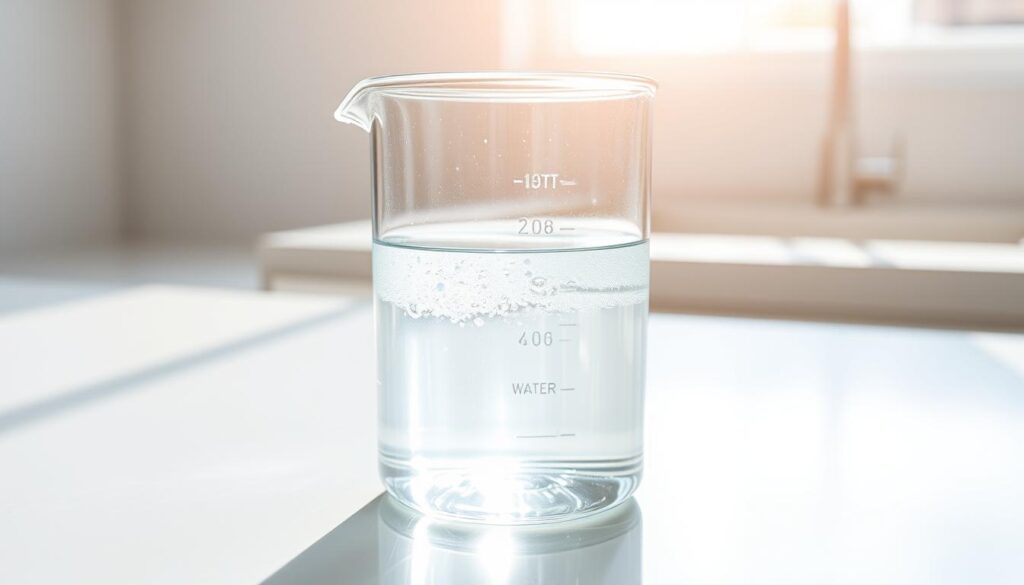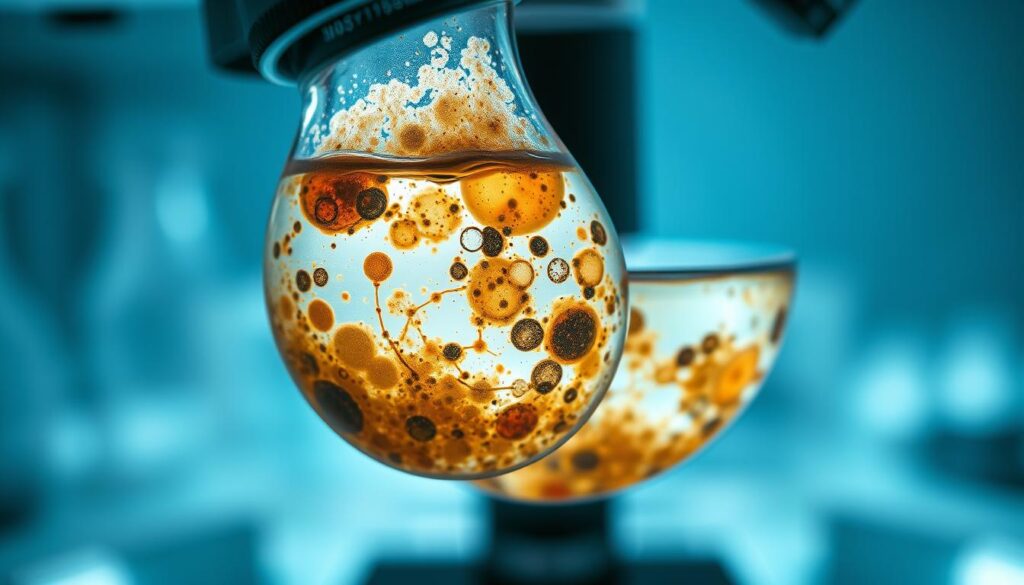
Could a clear tap hide a serious health risk in your home? In North Vancouver, coastal weather, ageing plumbing and changing land use can alter what comes from your faucet — even when the liquid looks and smells fine.
We guide you through practical steps to assess and protect your drinking water. As private well owners, you are responsible for monitoring your supply. Many contaminants are invisible and odourless, so routine testing is the only reliable way to confirm safety for infants, seniors and immunocompromised people.
We explain when to schedule checks, which parameters matter, and how to collect a sample that an accredited lab can analyse accurately. Following lab instructions reduces errors and gives you trustworthy information to act on.
Lord Mechanical LTD serves North and West Vancouver with sampling support, fixture upgrades and ongoing improvements — call 604-670-3737 for help.
Key Takeaways
- Clear appearance does not guarantee safe drinking water; invisible contaminants can be present.
- Regular testing and proper sample collection give reliable results from accredited labs.
- Well owners must monitor supply and compare results to Canadian guideline values.
- Infants, pregnant people and immunocompromised individuals face higher risks.
- We offer local support in North and West Vancouver for sampling and repairs — call 604-670-3737.
Why testing your drinking water matters in North Vancouver
Hidden contaminants in local supplies pose real risks to health and plumbing systems. Microbial threats such as viruses, bacteria and protozoa can enter wells or mains from septic leaks, wildlife and surface runoff after heavy rain or snowmelt.
Chemical hazards may come from local geology or older pipes. Lead from aging pipes and trace elements from bedrock can build up over years without changing the taste or look of your tap supply.
Health risks from microbial and chemical contaminants
We use total coliform and total coliform bacteria as indicators of sanitary integrity. The presence of E. coli signals recent faecal contamination and requires immediate action.
Vulnerable groups—infants, seniors, pregnant and immunocompromised people—face higher risk from even low-level contamination. Regular water testing protects everyone and helps prioritise corrective steps.
| Risk | Common source | Immediate action |
|---|---|---|
| Bacteria / viruses | Septic leaks, surface water | Boil advisory, resample |
| Lead & metals | Old pipes, corrosive supply | Flush, replace pipes, remediation |
| Minerals / chemicals | Local geology, runoff | Assess levels, install treatment |
We recommend a routine for well water and municipal connections alike. Call Lord Mechanical LTD in North and West Vancouver at 604-670-3737 for sampling support and plumbing solutions.
When to test your water in Canada’s coastal climate
Knowing when to test helps you spot risks tied to storms, drought or nearby land work. We recommend a predictable routine and extra checks after events that stress sources.
Routine schedules: microbial, chemical, and general checks
Microbial checks every six months for well water. General parameters every two years. Chemical frequency should follow local public health advice based on geology and land use.
Events that trigger immediate testing
- After heavy rains, floods, spring and fall runoff, droughts or regional wildfires.
- When you notice a change in colour, taste or smell of your drinking water.
- After well repairs, plumbing maintenance, long periods of disuse, or nearby construction.
- Prioritise dug, shallow or bedrock wells and wells with thin soil cover and surface water influence.
| Schedule | What to test | When to act |
|---|---|---|
| Every 6 months | Microbial (coliform, E. coli) | After floods or septic concerns |
| Every 2 years | General parameters (pH, hardness, iron) | Routine maintenance periods |
| As advised | Chemicals (lead, nitrate, metals) | Based on local geology and land use |
Keep a calendar and log each water sample—trends reveal slow changes that affect health and systems. Call Lord Mechanical LTD in North and West Vancouver at 604-670-3737 to plan when to test and to coordinate lab logistics.
How to collect a water sample the right way
Accurate lab results depend on how you prepare, label and transport the sample you collect. Follow clear steps to protect integrity and avoid repeat testing.

Preparing sterile bottles, forms and cold storage
Obtain sterile bottles and requisition forms from an accredited laboratory. Keep bottles sealed and clean until collection.
- Store bottles in a cool spot and do not open until ready to collect.
- Complete forms with date, time, location and sampler name before leaving the site if allowed.
- Bring an insulated cooler and ice packs for microbial samples.
Sampling from the correct tap and avoiding contamination
Choose the cold‑water tap most used for drinking. Avoid taps with filters, hoses or aerators that can skew results.
- Pre‑flush by running cold water for the time your lab specifies.
- Sanitise the spout only if instructed, and never touch the inside of the cap or bottle.
- Fill to the marked level, seal immediately and label the bottle.
Lab drop‑off, transport timelines and chain of custody
Keep samples chilled and deliver to the laboratory within the stated holding time. Use insulated containers and minimise transit time.
We can collect samples, manage chain of custody, and coordinate drop‑off with local laboratories to reduce the risk of invalid results. Call Lord Mechanical LTD in North and West Vancouver at 604-670-3737 for help.
Water quality testing: the core steps to get reliable results
Choose an accredited laboratory first. Your provincial drinking water authority or local public health unit can point you to approved laboratories. Only tests run through an accredited lab or health unit give dependable results you can act on.
Find and work with the right laboratory
We help you identify accredited laboratories via local public health so your tests meet recognized standards. We review lab kits and walk through instructions to avoid common collection errors.
Follow lab directions for every water sample
Follow all instructions on collecting, labelling, storing, handling and transporting the sample. Complete forms fully and keep chain of custody intact. This reduces re‑sampling and speeds up test results.
Plan repeat tests and keep a results log
Schedule microbial and chemical checks across the year. We set up a simple log so you can compare results and spot trends in wells or connected systems.
- We coordinate collection: on‑site sampling, pickup and delivery within holding times.
- We advise on test selection: presence/absence bacteria, metals panels, nutrients and operational indicators.
- We document actions: what was tested, when, and any follow‑up work for compliance records.
| Step | Who does it | Benefit |
|---|---|---|
| Locate accredited lab | Public health / We | Valid, defensible results |
| Collect & label sample | You / We | Lower risk of rejection |
| Log and compare results | We help set up log | Detect trends, plan maintenance |
Need help arranging tests or interpreting reports? Call Lord Mechanical LTD in North and West Vancouver at 604-670-3737 and we will coordinate labs, sampling and next steps.
Testing for microbial contaminants: total coliform and E. coli
Early microbial detection prevents illness and guides the next steps after a positive sample. Microbial screens focus on two indicators: total coliform and E. coli. Labs report either a presence/absence screen or an MPN count to describe levels in a 100 mL sample.
Acceptable levels and what reports mean
Canadian guidance requires none detected for total coliform and E. coli in a 100 mL sample. Any detection triggers rapid follow‑up.
Presence/Absence (P/A) shows detected vs not detected. MPN gives an estimated count of coliform bacteria and can help locate persistent problems.
Immediate actions and confirmatory steps
- If E. coli is detected, issue a household boil advisory and use bottled water for drinking and food prep until cleared.
- Collect a second sample promptly. If confirmed, perform shock disinfection, flush the system, and resample—usually within one week—to verify success.
- Repeated coliform detections often point to a faulty well cap, surface intrusion or plumbing biofilm; these need targeted repairs.
| Finding | Immediate action | Follow up |
|---|---|---|
| E. coli detected | Boil advisory; use bottled safe drink source | Resample; shock disinfection; retest within 7 days |
| Total coliform only | Investigate sanitary breach; consider temporary precautions | Resample; inspect cap and plumbing; remediate if recurring |
| MPN high | Limit using water for drinking | Assess source; corrective repairs and post‑treatment verification |
We can help collect a proper water sample, interpret test results and treat systems so your drinking and using water stay safe. Call Lord Mechanical LTD in North and West Vancouver at 604-670-3737.
Testing for chemical contaminants in well and municipal connections
Some contaminants build up over years and need specific lab analysis to reveal them.
We prioritise a core chemical panel for North Vancouver: lead from legacy pipes, arsenic and uranium from local geology, manganese, and nutrient species such as nitrate and nitrite that can signal agricultural or septic influence.

Sources and what raises levels
Corrosive supplies and older pipes can leach metals. Rock formations may add arsenic or uranium. Nearby land use, industry or spills can introduce hydrocarbons, solvents or pesticides.
Health impacts and action thresholds
Some chemicals harm over months or years. When results exceed guideline levels, we recommend confirmatory sampling, treatment adjustments and documented resampling to verify improvements.
When to expand your scope
After wildfires, renovations or fuel incidents, add volatile organics, hydrocarbons, pesticides or PFAS to the suite of tests. For elevated nitrate, we trace sources, improve wellhead protection and install targeted treatment.
| Contaminant | Common source | Typical action |
|---|---|---|
| Lead | Old pipes, fittings | Corrosion control, POU filters |
| Nitrate | Septic, runoff | Source control, treatment, retest |
| Arsenic / Uranium | Geology | Confirmatory sampling, treatment |
We can design a sampling and treatment roadmap for your home or business, install solutions and schedule follow‑up tests to bring levels below guideline thresholds. Call Lord Mechanical LTD in North and West Vancouver at 604-670-3737.
Testing for general water quality and system performance
Measuring pH, dissolved solids and minerals reveals how your system performs day to day.
Key parameters to check
We assess pH, hardness, iron, chloride, alkalinity, sodium, sulphate, total dissolved solids (TDS) and dissolved organic carbon (DOC).
These readings are mostly aesthetic or operational. They rarely pose an acute health risk but they shape taste and appliance life.
Aesthetic and operational issues
High iron or manganese can stain fixtures and cause a metallic taste. Removing iron often lowers adsorbed lead and arsenic risks and improves filter life.
Raised TDS and specific ions like sodium, chloride or sulphate drive scaling, corrosion and poor soap performance. We tune softeners or RO systems to stop damage and restore feel.
- We recommend periodic checks of total dissolved and related dissolved solids to track mineral content.
- We link pH and alkalinity to corrosion control so metals stay stable in plumbing.
- We design fixes—sediment pre‑filters, iron reduction, softening or reverse osmosis—based on your profile.
| Parameter | Common issue | Typical fix |
|---|---|---|
| Iron | Staining, metallic taste | Pre‑filtration, greensand |
| TDS / Sodium | Scaling, poor taste | Softener, RO at tap |
| DOC | Filter load, disinfection byproducts | Activated carbon, schedule changes |
We schedule re‑testing to verify improvements and to adjust system settings over time. Call Lord Mechanical LTD in North and West Vancouver at 604-670-3737 for a site review and to set up a tailored test plan.
Interpreting test results and choosing next steps
Look at your report parameter by parameter, then rank actions by risk to people in your home. Accredited laboratories often show presence/absence for microbial indicators and numeric concentrations for chemicals. Match each entry to the Guidelines for Canadian Drinking Water Quality to spot exceedances quickly.
Compare results to Canadian guidelines and note exceedances
We check each value—mg/L and ppb—and mark whether it is aesthetic or health‑based. For microbial hits like total coliform or E. coli, follow immediate precautions and resample after remedial action.
Corrective actions and maintenance planning
- Immediate: boil advisory, shock disinfection and prompt re‑sampling for microbial detections.
- Short term: point‑of‑use filters, carbon adsorption, or RO to address dissolved solids, sodium and taste issues.
- Long term: whole‑house treatment, corrosion control and scheduled filter changes to keep levels stable.
When to call Lord Mechanical LTD
We liaise with laboratories and public health, document chain of custody, and log each water sample and result. We also assess systems and plan upgrades so problems do not recur.
“Match each parameter to the Canadian guideline, prioritise actions that protect health first, and confirm improvements with a follow‑up sample.”
| Issue | Immediate step | Follow up |
|---|---|---|
| Total coliform / E. coli | Boil advisory, shock disinfection | Resample within 7 days |
| High dissolved solids / sodium | Point‑of‑use RO or softening | Monitor levels, change media |
| Metals or persistent chemicals | Confirmatory sampling | Treatment design and re‑test |
We keep a clear log of every sample, sample date and outcome to build a defensible history. Ready for expert help? Call Lord Mechanical LTD at 604-670-3737 for North and West Vancouver upgrades, re‑testing support, and tailored treatment planning.
Conclusion
A clear final check brings everything together so you can act with confidence.
Plan routine testing with an accredited lab, compare results to Canadian guideline values, and take prompt corrective steps. Many contaminants are invisible; do not rely on smell or sight to judge if your drinking water is safe.
Keep a simple log of dates, parameters and outcomes. Resample after fixes to confirm improvements and build a trusted record for future decisions.
For North and West Vancouver properties, our team helps with sampling, plumbing upgrades and treatment design. Call Lord Mechanical LTD at 604-670-3737 to schedule an assessment and keep using water safely and reliably.

